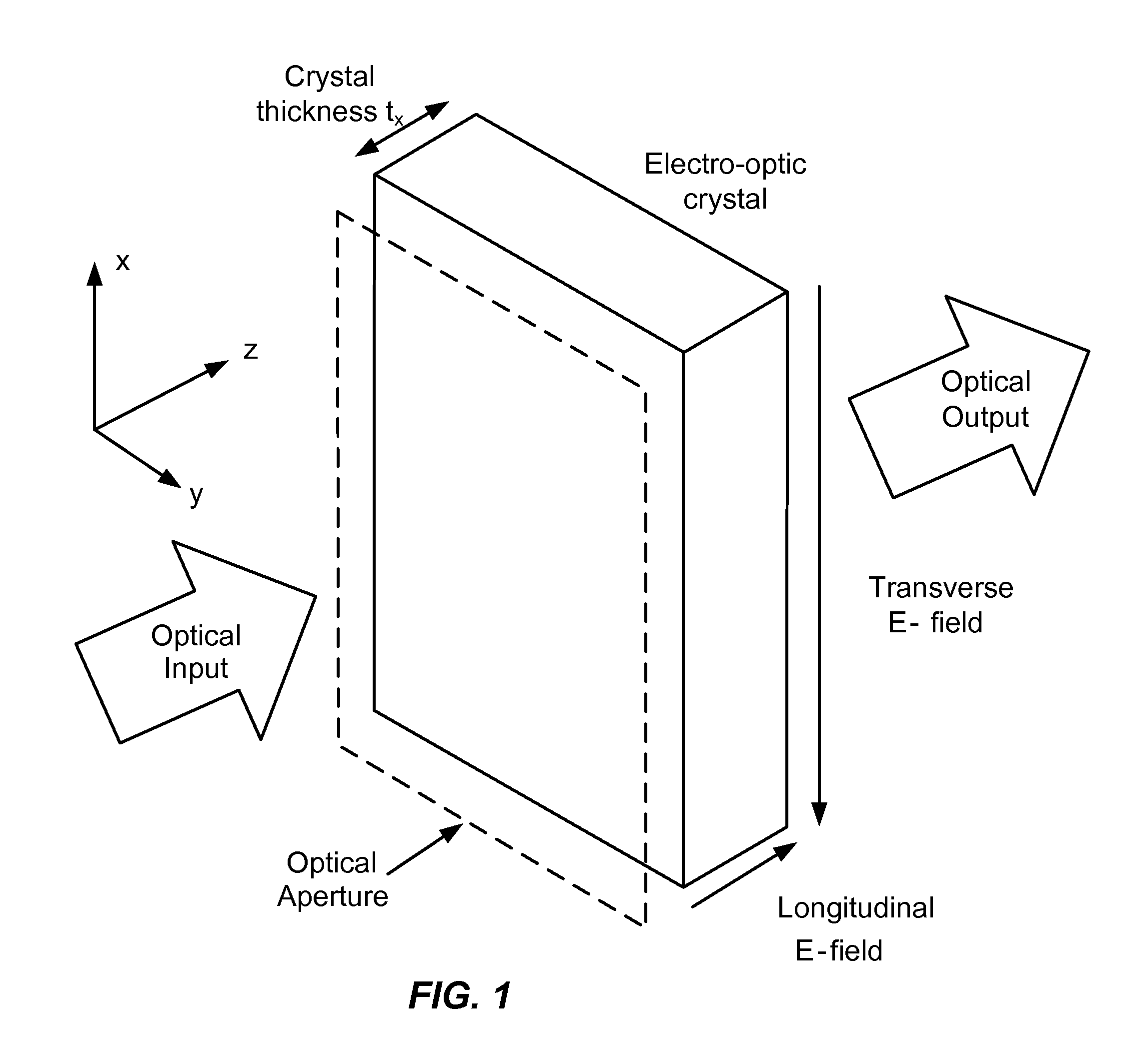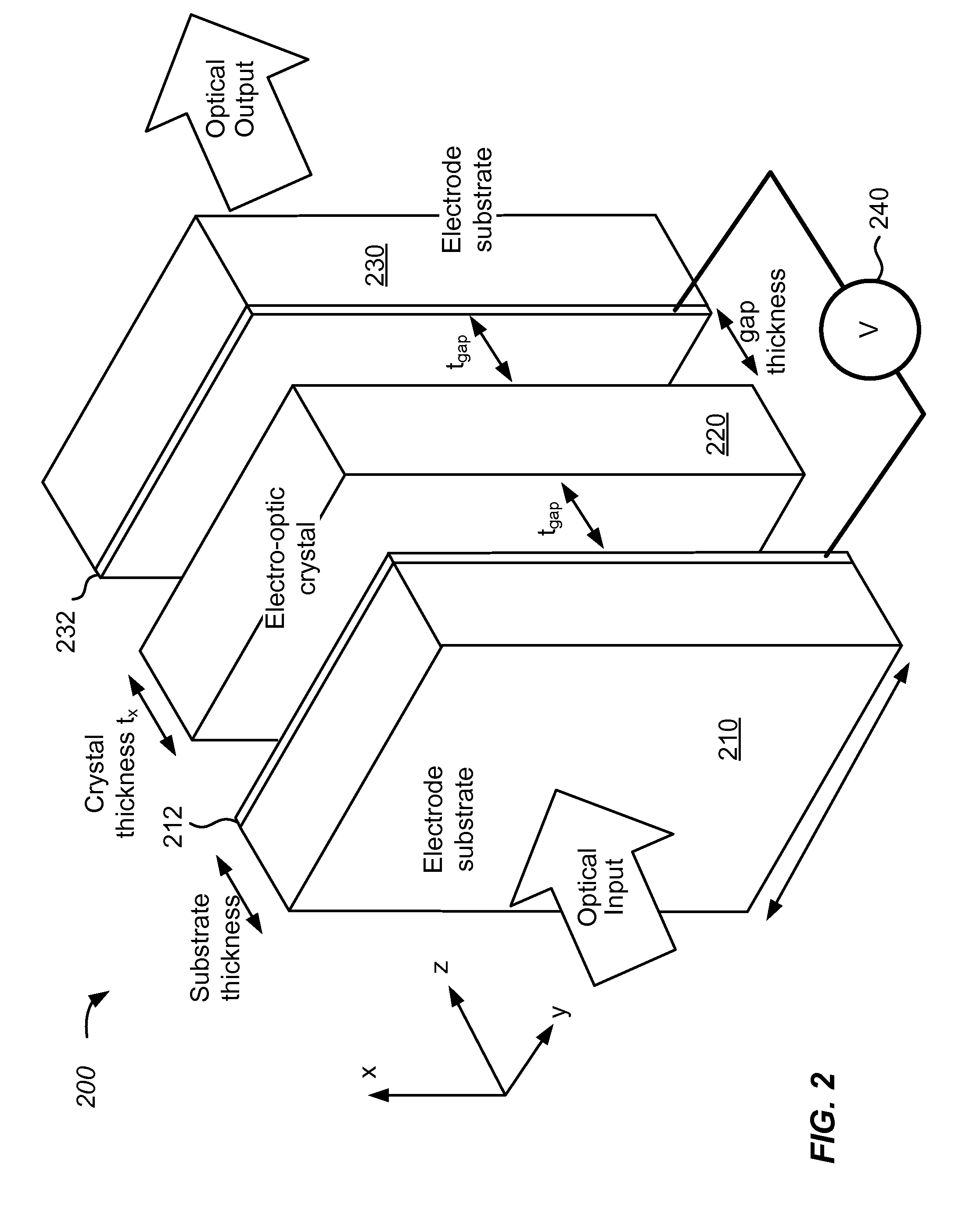Electro-optic device with gap-coupled electrode
a gap-coupled electrode and optical device technology, applied in optics, instruments, optical elements, etc., can solve problems such as unsatisfactory polarization rotation, and achieve the effects of high repetition rate, high average power, and high optical power
- Summary
- Abstract
- Description
- Claims
- Application Information
AI Technical Summary
Benefits of technology
Problems solved by technology
Method used
Image
Examples
Embodiment Construction
[0021]According to embodiments of the present invention, optical switches are provided in the form of Pockels cells with longitudinal electrode geometries. According to some embodiments of the present invention, the drive voltage is independent of crystal thickness and the crystal is isotropic in the aperture plane. As described below, the electrodes used to apply the electrode field overlap with the optical aperture, and therefore are transparent or semi-transparent to permit optical propagation.
[0022]Pockels cells with ring electrodes leave a portion of the crystal surface unexposed, but use a thicker crystal (i.e., a higher thickness: aperture ratio) in order to achieve a longitudinal electric field with reduced fringing effects. Accordingly, this design results in increased absorption and thermal birefringence. As a result, it is difficult to scale ring electrode devices to large aperture. Longitudinal devices with plasma (low pressure gas phase) electrodes have been constructed...
PUM
| Property | Measurement | Unit |
|---|---|---|
| size | aaaaa | aaaaa |
| switching voltage | aaaaa | aaaaa |
| thicknesses | aaaaa | aaaaa |
Abstract
Description
Claims
Application Information
 Login to View More
Login to View More - R&D
- Intellectual Property
- Life Sciences
- Materials
- Tech Scout
- Unparalleled Data Quality
- Higher Quality Content
- 60% Fewer Hallucinations
Browse by: Latest US Patents, China's latest patents, Technical Efficacy Thesaurus, Application Domain, Technology Topic, Popular Technical Reports.
© 2025 PatSnap. All rights reserved.Legal|Privacy policy|Modern Slavery Act Transparency Statement|Sitemap|About US| Contact US: help@patsnap.com



